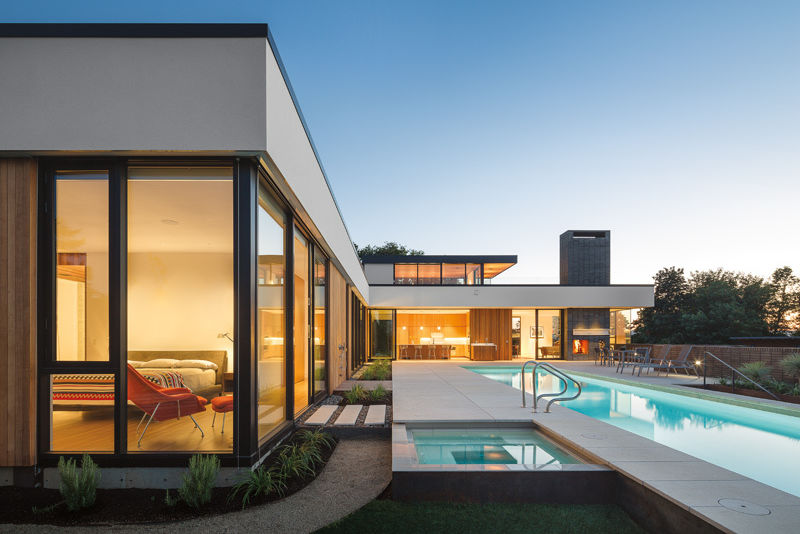
10 Amazing Houses Defining a New Era of Portland Architecture
It’s no secret that the spendiest—and sometimes most aesthetically challenging—architecture designed by top Rose City–based firms often gets built in other cities. But a handful of Portland’s residential architects have started to connect with local clients who have the gumption and nerve to build inventively. (OK, sometimes the architects themselves are the clients.) Here’s a sampling of 10 recent homes that stand out from the local pack thanks to their architectural verve, affordable green ambition, and faithfulness to the French.
Ash+Ash House

Image: Josh Partee
Hennebery Eddy Architects, 2014 — Mount Tabor
From the geothermal heat pump to the rainwater-recovery system flushing the toilets to the 10-kilowatt solar array selling power back to PGE, the just-finished home architect Timothy Eddy designed for himself and his wife Joyce Bell is a catalog of contemporary sustainability technologies. “I wanted to try out a bunch of stuff,” says Eddy with a shrug. The house is a series of grand spaces, many of them outdoors, that permit 180-degree views of the surrounding landscape. Peppered with features like a Luis Barragán–style floating stair and rough-sawn oak-paneled walls, the home achieves a high elegance that’s both visual and sensual. The uninterrupted east- and north-facing expanses of floor-to-ceiling sliding glass doors that border the large central pool might seem to sacrifice energy efficiency for Southern Californian cravings—if they weren’t triple-glazed.
Tower House

Image: Courtesy Laura Swimmer
Ben Waechter, 2013 - Willamette Heights
An alum of both the Renzo Piano Building Workshop and local sensation Allied Works, Ben Waechter has designed some of the city’s most high-flying residential architecture, often acting as his own contractor and sometimes building with purely speculative hopes of finding a buyer. The Tower House rises from its steep Willamette Heights site overlooking Northwest Portland’s industrial district in a stack of four 600-square-foot floors—dining/kitchen and living rooms atop the bedrooms—all accessed by a 24-foot-long bridge that lands on floor three. Rounded corners on the deep, bronze-colored corrugated-metal exterior soften the home’s austerity while further accentuating its vertical reach. To this stark abstraction, Waechter offers two subtractions: decks, one per box, clad in pure white. Buyers, beware—or be fit—there’s no elevator!
The 100-Year House
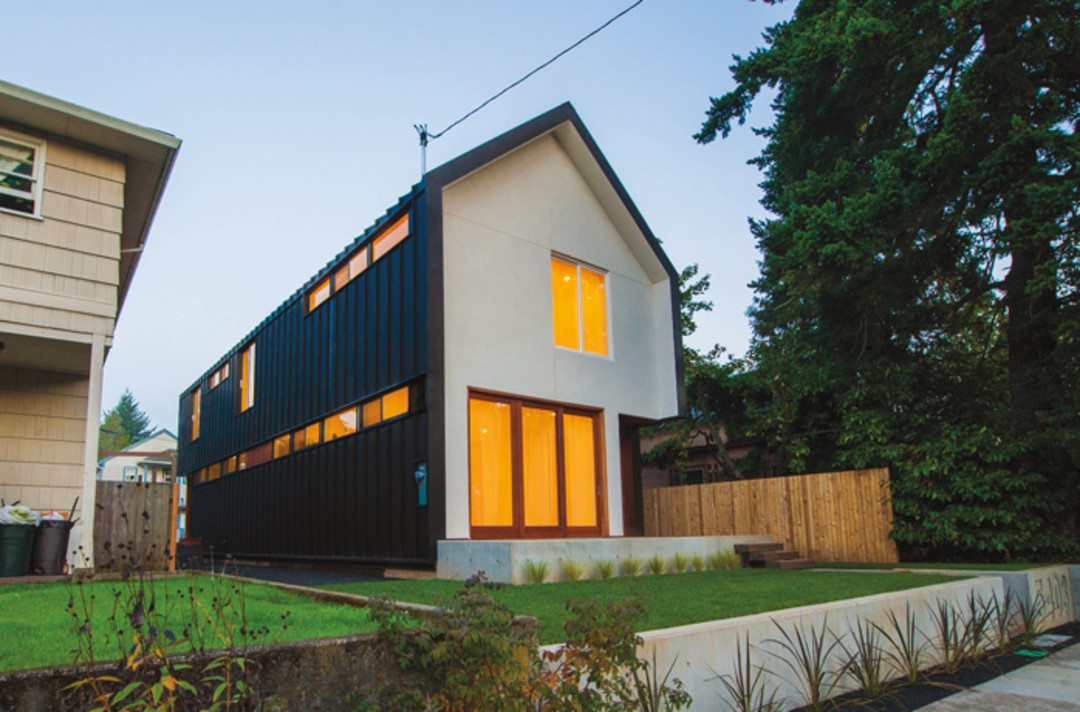
Walker Templeton, 2013 — Northeast Portland
For traditionalists who think modernist houses don’t belong in traditional neighborhoods, Sera Architects senior project designer Walker Templeton throws down a challenge: all the minimalism of a modern house, packaged in a traditional volume so archetypal it could pass in a Monopoly game. This spec-built house (which quickly found a buyer) has the open-yet-homey livability of a well-designed loft. From recycled Douglas fir accents to the smartly placed skylights and clerestory windows, warm materials shine brightly in the natural spotlight with a simple, white stage. More than just a nod to its older-neighborhood context, the pitched roof adds entertainment: from the gutterless overhangs and down the sheet-metal siding, the winter rains fall into collection pools, turning bad weather into a cascade of delight.
Omey House
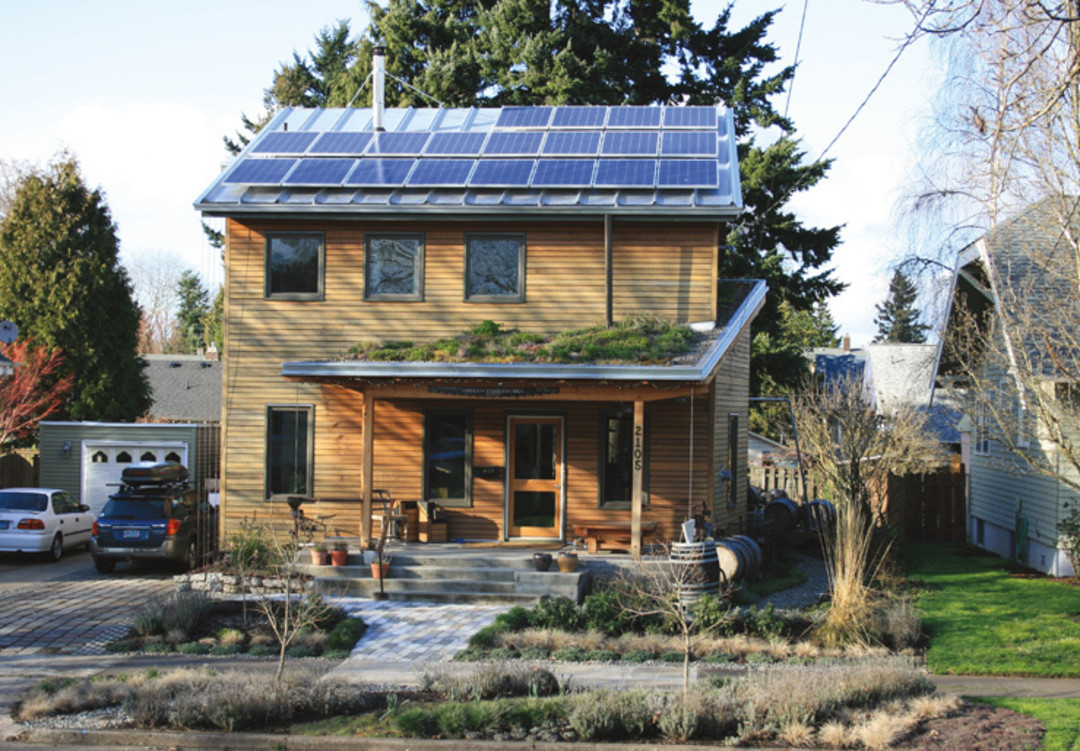
Image: Courtesy Corey Omey
Corey Omey, 2010 — North Portland
The most sustainable building, according to the eco-building catechism, is the one that is standing—meaning no matter how energy efficient, a built-from-scratch house will have a larger carbon footprint than even an old, drafty home. Corey and Deb Omey spun that slogan into a blueprint, not only keeping this 1925 North Portland house standing, but remodeling and expanding it with a collage of other buildings and recycled materials. They used real estate signs to resheath it, deployed bowling-alley wood as countertops, and saved the bathroom doors of Bhagwan Shree Rajneesh’s hotel near Antelope for the home’s basement. Homegrown accents like tile mosaic stair landings may tip toward the crunchier side of the techie-versus-hippie green-building split. But the cedar siding for the rainscreen (milled from rejected trees) smartly unifies the house with a ready-to-wear look fit for almost any Portland neighborhood.
Corpus
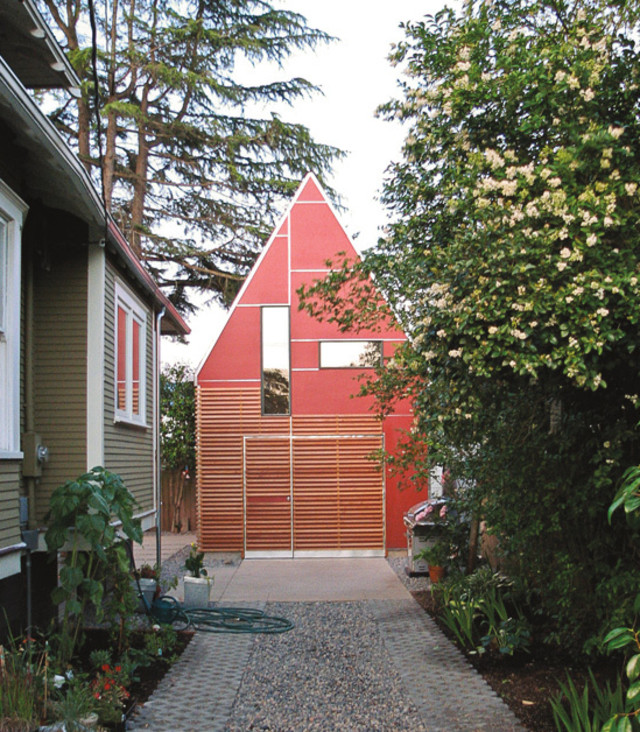
Clive Knights and Louise Foster, 2010
Southeast Portland
Feeling crammed in their two-bedroom bungalow upon the arrival of a second child, this architect couple (she, a designer at SRG Partnership; he, chairman of PSU’s architecture department) opted to replace their garage with a workshop/studio they dubbed “Corpus.” The lack of plumbing protected it from the city’s stringent ADU requirements (which, among other things, would have demanded the roof match the house’s pitch). Functionally, the steep roof allowed them to follow another city rule, which requires a 10-foot eave while still offering enough head-height to work. Poetically, the structure creates “a wedge to the sky,” says Knights. A trio of lower north-tilting skylights offers vistas of the surrounding landscape and a view of the backyard. A single southern skylight, hung high, casts a trapezoidal splash of light that travels across the space, “marking time.” Exterior cedar slats protect an entire north wall made of translucent polycarbonate and wrap around the corner to camouflage, according to Knights, “the large plane that’s always left with a garage door.”
Irvington Residence

Image: Courtesy Lincoln Barbour
Dao Architecture, 2012 — Northeast Portland
At 11½ feet wide, this pied-à-terre designed for a Los Angeles couple might easily be mistaken for an ADU (accessory dwelling unit). But it’s really a fifth unit to a fourplex the couple owns next door—and a lesson on how intelligent contemporary architecture can squeeze into a historic neighborhood. Dao’s Joann Le and David Horsley used every available square inch, but still bowed to the heritage-centric neighbors, from the placement of the windows to the home’s gracious meeting with the street. A dramatic 20-foot-long skylight over the double-height stairwell and dining room helps the house’s more public spaces soar, while the bedrooms, office, and living room tucked at either end are as cozy and intimate as the dimensions might suggest. In a few years the home will be more “historically significant” than most of those houses around it—but with the neighborhood now under the rules of Portland’s largest National Historic District, this kind of well-crafted architecture of the current era can no longer be built in Irvington.
Portland Hilltop House
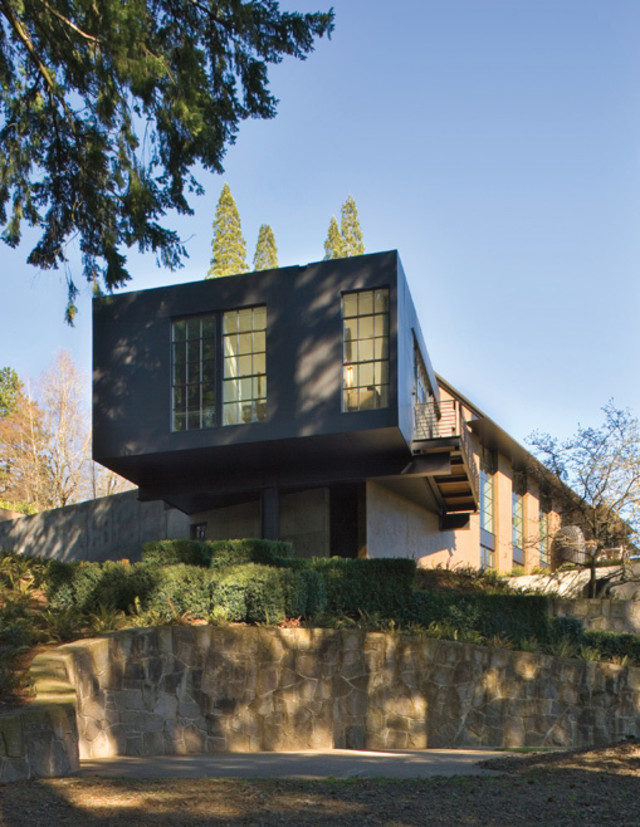
Image: Courtesy Tim Bies
Olson Kundig Architects, 2007 Portland Heights
Seattle architect Tom Kundig’s formidable résumé includes top awards from the Smithsonian Cooper-Hewitt National Design Museum and the American Academy of Arts and Letters. For this Portland Heights house, his clients were a pair of similarly accomplished design entrepreneurs, Paul Schneider and Lauren Eulau, founders of local jewelry store Twist. The structure is a long, stout, two-story volume, never more than one room wide. Living and entertaining rooms sit atop bedrooms and a 100-foot-long library with floor-to-ceiling glass that stretches across most of the rear elevation, overlooking the estate-scale garden designed by Michael Schultz. Nationally renowned landscape designer Andrea Cochran created the entry courtyard as a complement to Kundig’s glass-box foyer. Kundig disrupts the otherwise bracingly rectilinear design with just one simple, muscular eccentricity: a master suite clad in steel, hoisted into the trees by a single column, and turned just a few degrees to face a westward view of the Tualatin Valley and Coast Range.
Overton 19
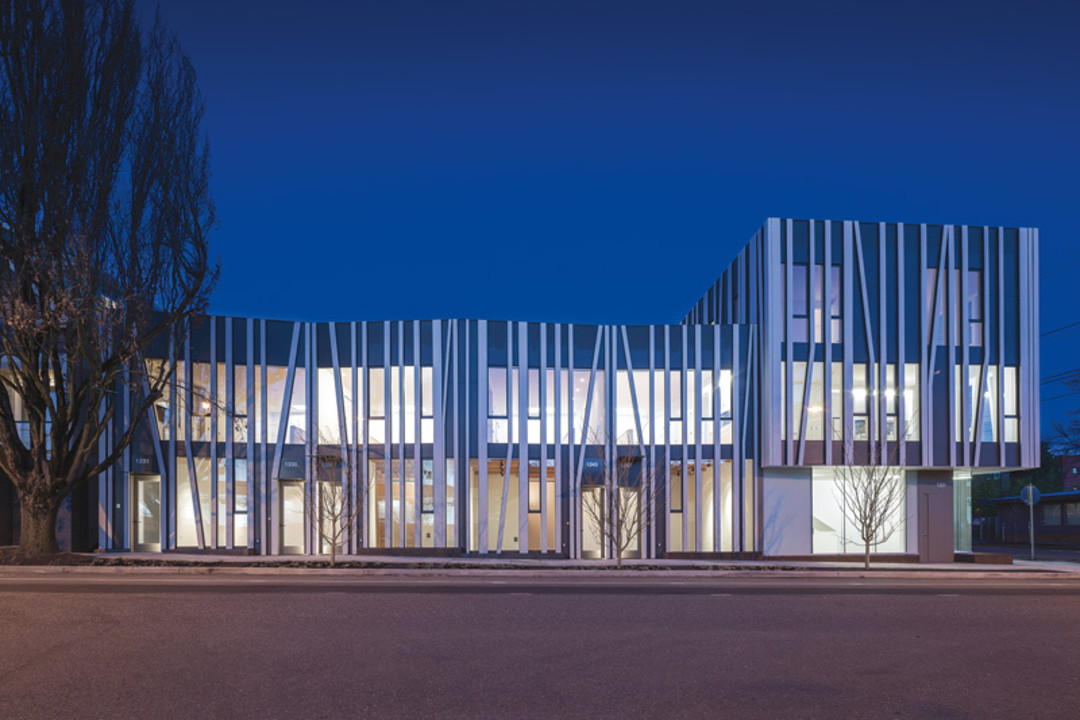
Image: Courtesy Jay Elliott
Works Partnership, 2014 —Northwest Portland
One of the great tensions of living at street level in densifying neighborhoods is light vs. privacy. Windows let the sun peek in—along with everyone else. With its typical mix of high design and problem solving, Works Partnership took a lesson from the trees, creating a façade of rhythmically slanting windows that, upon first blink, filter the distant views inside like an aspen grove in a summer breeze. The windows offer a three-fer: they screen the eight live/work units from neighbors and passersby; they turn a simple surface into an architectural feature, inside and out; and they actually save money by using less glass more efficiently. In a neighborhood of newly finished modernist boxes and bloated art deco mimics, the Overton 19 aggressively stands out, for both its forest abstraction and its simple, muscular massing: it is just two stories, except at the corner, where two units are “lifted” above glass-walled retail space. Would that other infill buildings could use such simple means so effectively.
O2Haus
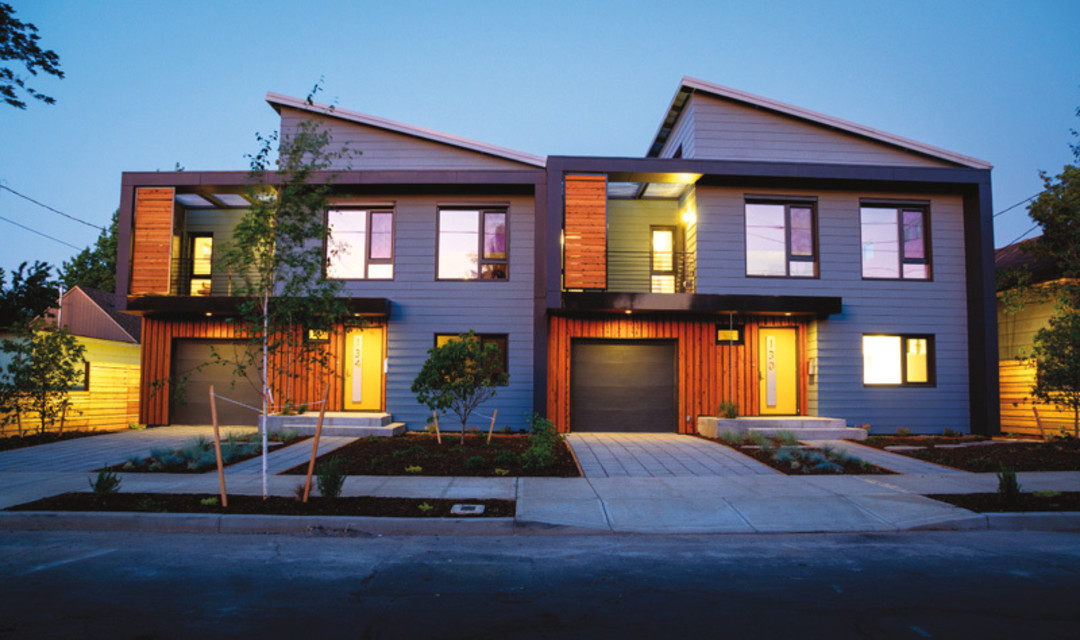
Image: Courtesy Garrett Downen
PDX Living, 2013 — Northeast Portland
Architect Rob Hawthorne and builder Bart Bergquist believe there’s a market for midpriced infill homes that produce as much electricity as they use. So far, so good. Their 2010 CoreHaus—the first residence in Portland to earn certification as a “Passive House,” the airtight, überefficient system pioneered in Germany—quickly found a buyer. So too their TrekHaus, a pair of attached town houses that, after year two, are producing an average of 14 kilowatt hours of electricity and using only nine daily. Their latest, the O2Haus, is a smartly designed Passive House duplex that employs all the necessary gizmos to send equal amounts of power back to the grid: triple-glazed tilt-and-turn windows, a heat pump system, heat recovery ventilators. But with touches like LED lighting that splash the living areas with color, Hawthorne and Bergquist are finding the fun within the technocracy of green building. And they’re finding buyers, too: the O2Haus sold before it was completed.
The Country Estate
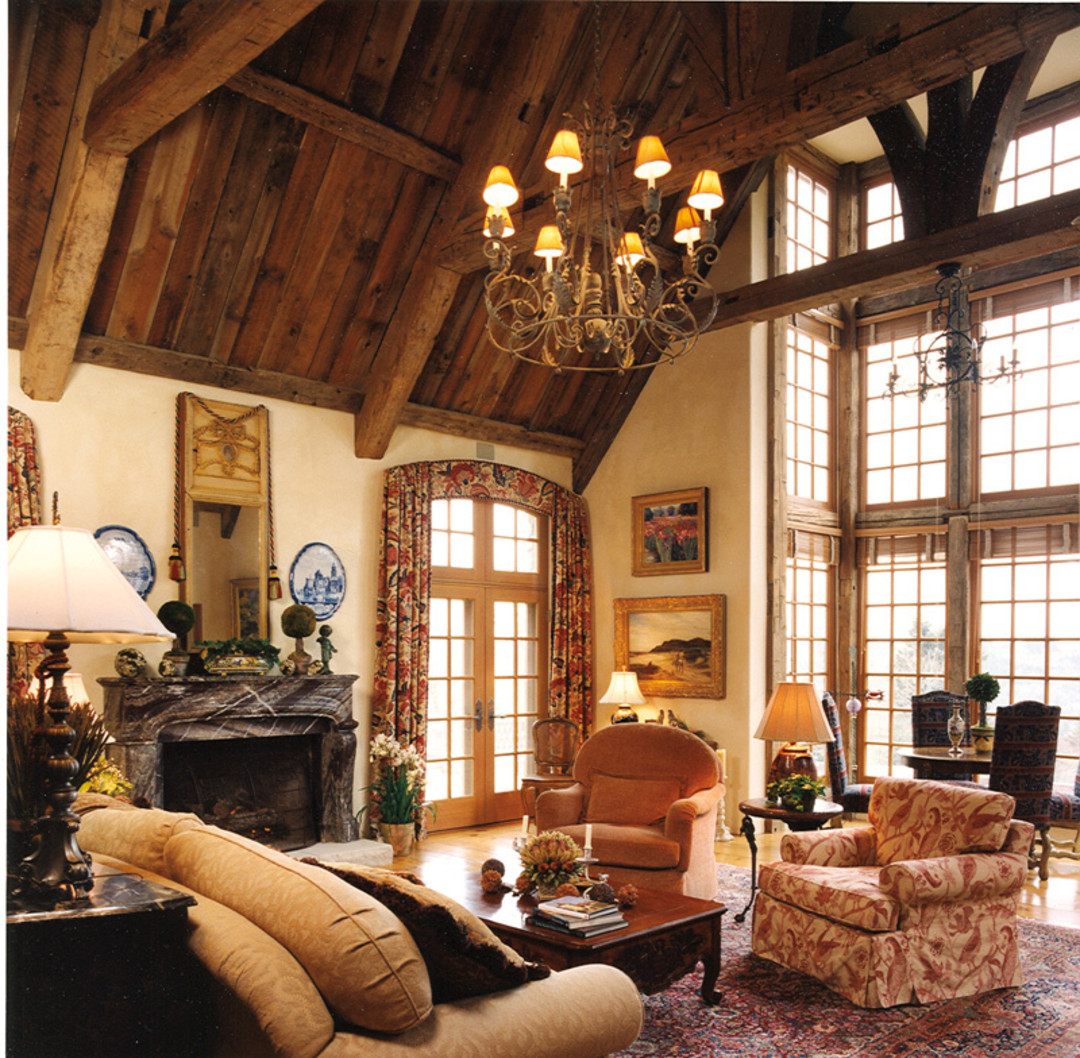
Image: Courtesy Jeffrey Miller
Jeffrey Miller, 2000 — Stafford Hills Ranch
Plenty of designers collage historic motifs into mansion-scaled confections of architectural confusion, the clashing eras held together by caulking. For three decades, architect Jeffrey Miller’s best projects have offered an alternative: a deeply informed divining of the past built to stand apart from the fest of fads. For Greg and Penny Popma, Miller channeled the country house through the great turn-of-the-century English architect Edwin Lutyens—though he fully acknowledges that the steep, split-pitched rooflines and stone façade are more French. The 8,000 square feet of interiors pivot off a one-and-a-half-story solarium (an English device, Miller notes, to cope with similarly cloudy climates), the vaulted ceiling’s trusses built from hand-hewn beams salvaged from a Pennsylvania barn. In a testament to the careful eye he brings to his best projects, Miller decided that for the stone façade, Columbia River Basin basalt would be too gray to stand in for the limestone typically used by the French. So he hunted down an Olympic basalt that, when the light hits it just right, glows the proper Francophilic yellow.
Beyond Portland
Bold local architecture rising outside the Rose City
1 Stubbs House: Architecture Building Culture, 2011 — Seattle, Washington
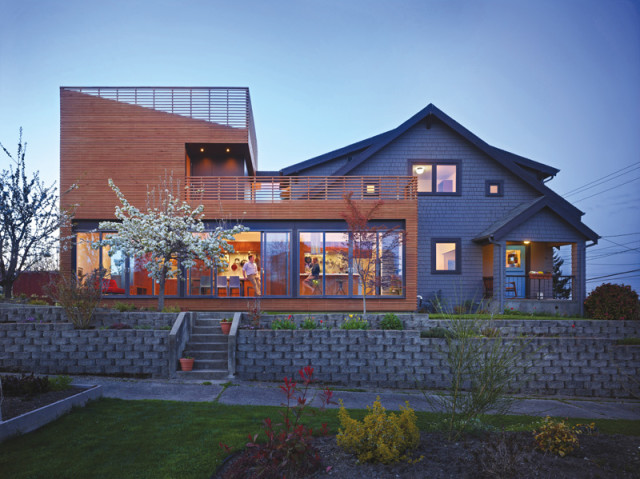
Matthew and Sara Stubbs liked their 1905 Beacon Hill bungalow. They also love loft living and serving dinner to dozens around a long table. To wed the couple’s competing desires, Portland architect Brian Cavanaugh designed a 960-square-foot addition with a new kitchen, great room, master suite, and roof deck. But rather than mimic the old house, Cavanaugh merely echoed its proportions with a design that could easily incorporate amenities like a gourmet kitchen and a 36-foot-long wall of sliding windows. The result boldly merges old and new like a warm handshake between the turns of two centuries.
2 Owl Creek Residence: Skylab Architecture, 2014 — Snowmass, Colorado
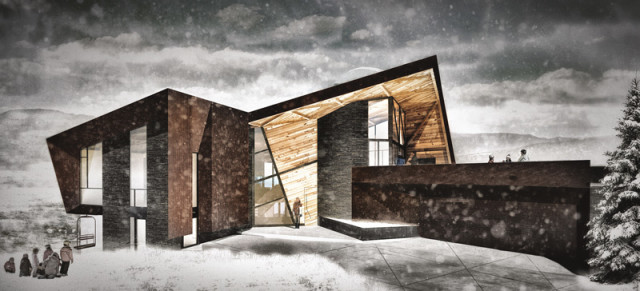
Image: Courtesy Skylab Architecture
To meet the needs of a brother and sister whose young families like to play together, Skylab shaped a 4,500-square-foot vacation home with a large gathering space and more private retreats. To meet a height limit of 28 feet, the house steps down the hill in a series of triangulated forms in which kitchen, living room, den, media room, and wine cellar occupy upper spaces and bedrooms, bunk rooms, ski locker, steam room, and family movie room are tucked below. Overall, firm founder Jeff Kovel describes the scheme as “a house of rooms, in which the spaces are shaped not by walls but by differing tiers and views.”
3 Dutchess County House: Allied Works, 2012 — Dutchess County, New York
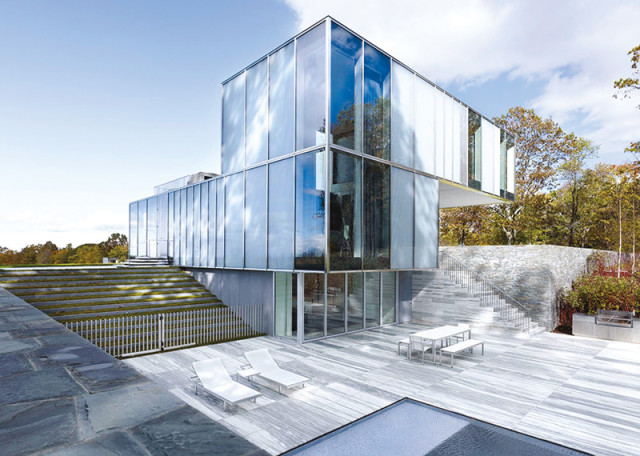
Image: Courtesy Jeremy Bitterman
For an art-collecting couple, Allied Works Architecture designed a trio of buildings on a 400-acre estate in the Hudson River Valley. The main house is a glass-walled helix featuring a 40-foot cantilever that, according to firm founder Brad Cloepfil, “sometimes dissolves into the site or sometimes stands as an object,” thanks to its alternating opacity, reflectivity, and translucency. But with features like an atrium of 15-foot glass panels by sculptor Mel Bochner and a façade transformed into an architecturally scaled video installation by multimedia artist Doug Aitken, the boundaries between art and building blur.
4 Sunshine House: Corey Martin, 2013 — Boulder, Colorado
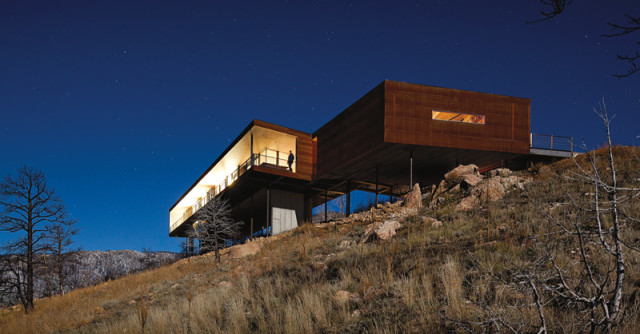
Image: Courtesy Jeremy Bitterman
After a fire decimated his house near Boulder, Denver ad guru Evan Fry turned to college chum Corey Martin, a partner at THA Architecture, to design a replacement. Rising on steel stilts and clad in fire-resistant, corrugated steel—intentionally allowed to rust to a rich bronze patina, evoking the region’s old mining shacks—the 2,200-square-foot home is heated with geothermal coils and powered by an 8-kilowatt solar array, all supporting the wide-windowed views of the recovering hillsides. The entire south face of the house is composed of sliding glass doors for a spectacular panorama of the Rockies.
